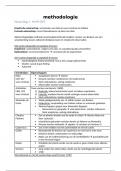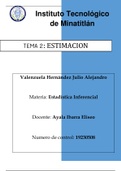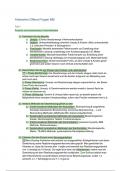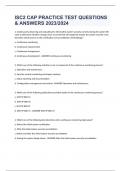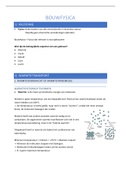Trusts: LC3 – Formalities in Trust Creation
1. Formalities, trust creation and trusts of land
Video 1: Formalities and Trust Creation
What is needed for a valid trust?
(a) The three certainties – intention: subject matter: object
(b) Constitution – the property itself is properly transferred to the trustees
(c) Formalities – specific formalities for certain types of trust
Why do we require formalities?
“The Evidentiary Function – The most obvious function of a legal formality is … that of
providing ‘evidence of the existence and purport of the contract, in case of controversy’ …
The Cautionary Function – A formality may also perform a cautionary or deterrent
function by acting as a check against inconsiderate action. …
The Channelling Function – … a simple and external test of enforceability … [I]n this
aspect form offers a legal framework into which the party may fit his actions … it offers
channels for the legally effective expression of intention. …” (Fuller, ‘Consideration and
Form’ (1941) 41 Col LR 799)
Why require formalities for trust creation?
Certainty
Clarity/ transparency
Protection/paternalism
Restriction/recognition
“[Fuller’s analysis] explains why we insist upon certain formal requirements before holding a
trust to be valid. These formalities make it easier for the court to establish, on the evidence, that a
trust was created (the evidentiary function). They also tend to ensure that the settlor has thought
carefully about the consequences of his or her actions (the cautionary function). Formalities also
help to ensure that the trusts created are easily recognisable as trusts, within acceptable
parameters, and may be dealt with routinely (the channelling function).”
Davies & Virgo
One of the main purposes of formalities is to prevent fraudulent action.
When does trust creation require formalities?
(a) Inter vivos trusts (trusts created when settlor’s alive)
o No specific formalities
o In writing, orally, or even by conduct
Paul v Constance (by conduct) – “The question … is whether in all the
circumstances the use of those words on numerous occasions as
between Mr Constance and the plaintiff constituted an express
declaration of trust. The judge found that they did. For myself, I think
he was right to so find.” (Scarman LJ)
o The main focus is whether the intention is sufficiently clear under the
circumstances.
(b) Trusts of land/interests in land
o s.53(1)(b) LPA 1925 must be considered: a declaration of trust respecting any
land or any interest in land must be manifested and proved by some writing,
signed, usually by the settlor.
1
,Trusts: LC3 – Formalities in Trust Creation
(c) Testamentary trusts
o s.9 Wills Act 1837: no will is valid unless it is in writing and signed by the
testator and it is witnessed by two or more people.
Sub-trusts and formalities – whenever you have a trust of land, you will have to consider
s.53(1)(b) LPA 1925. So, if a sub-trust, or the creation of a sub-trust concerns an interest in
land, then you will need to look at s.53(1)(b).
If a disposition of a subsisting equitable interest, it must comply with s.53(1)(c) LPA 1925.
If a beneficiary wants to give away or sign their interest to another person, this will be a
disposition, so it must be in writing.
If the beneficiary asks the trustee to hold the property for the benefit of someone else, this
will also be considered a disposition that needs to be inwriting – comes from Grey v IRC.
When a beneficiary asks a trustee to transfer property outright to someone else with the
intention that their equitable interests will also go to that person, this would not be a
disposition, and this is sometimes called the Vandervell exemption.
What about the creation of a sub-trust?
The beneficiary here has created a sub-trust. B1 has equitable title, B2 has beneficial interest.
The question is whether this is a declaration of a subsisting equitable interest, and thus
whether the creation of a sub-trust needs to comply with specific formalities.
Two views on this:
(1) The creation of a sub-trust is a disposition of an existing equitable interest as the
(original) beneficiary has no further role. Thus, must be in writing and signed.
(2) The creation of a sub-trust is best treated as a declaration of trust that creates a new
interest.
The problem with formalities:
“[T]here are good reasons for formality rules being in place. It should, however, be
recognised that a strict insistence upon formalities will inevitably mean that the intention of
the settlor is frustrated in some instances. There is, therefore, a tension between giving effect
to the clear and unambiguous intention of the settlor and ensuring compliance with the
relevant formalities. This tension has produced some difficult cases …” (Davies & Virgo)
“However great may be the attraction of a strict application of the rules in the interests of
certainty, of estate planning and, indeed, of minimising litigation costs, there is a
countervailing driving force potentially at work … That is the wish to respect where possible
people’s clearly discernible intentions about the disposition of their property. The tension
2
, Trusts: LC3 – Formalities in Trust Creation
generated presents us with the question of how courts do and should respond to transactions
that fail to comply with the formality requirements, yet where a specific intention is
manifestly clear? Is the price of failure to comply to be invalidity?” (Moffat’s Trusts Law
Text and Materials)
Video 2: Formalities and Trusts of Land
s.53(1) Subject to the provision hereinafter contained with respect to the creation of interests
in land by parole - …
(b) a declaration of trust respecting any land, or any interest therein must be
manifested and proved by some writing signed by some person who is able to declare
such trust or by his will; …
When does s.53(1)(b) apply?
Creation of trusts in land or interests in land,
Self-declarations of trusts of land and transfers on trust,
Does not apply to resulting or constructive trusts (s.53(2))
Requirements:
(i) Manifested or proved by signed writing,
(ii) By ‘some person able to declare the trust’,
a. Seems to envisage the settlor,
b. Trustee may suffice: Gardner v Rowe
(iii) Declaration of the trust need not be in writing.
Non-compliance with s.53(1)(b) – A wants to transfer on trust property to T who is to hold it
on trust for B, but A does not comply with s.53(1)(b).
The trust is unenforceable. The intended beneficiary would not be able to enforce the
trust, but it is not void.
o “Under section 53(1)(b) of the LPA1925, it is not necessary that the
declaration of trust be made in writing. It is only necessary that it should be
evidenced in writing. Accordingly, it is possible for an oral declaration of trust
of land to be made on one day and evidenced by signed writing on another. In
such a case the oral declaration of trust is rendered enforceable from the
beginning.” Taylor v Taylor
If the trustee wishes to be bound by the trust, they can be. However, they cannot be
compelled to fulfil their obligations by the intended beneficiary.
What about the possibility of fraud on strict reliance on the formalities? Will equity
intervene?
o ‘Equity will not permit a statute to be used as an instrument of fraud’.
Example: A orally declares a trust of land and transfers the legal title to
B to hold for the benefit of C. In doing so, A also constituted the trust
and transferred the legal title to B. If A did not comply with s.53(1)(b),
this means that C can’t enforce the trust against B. So, if B was so
inclined, he would have legal title and can enjoy the property without
being subject to the obligations of the trust. = the intended trustee is
committing fraud (aka using a statute as an instrument of fraud).
Rochefoucauld v Boustead – “… it is a fraud on the part of a person to
whom land is conveyed as a trustee, and who knows it was so
conveyed, to deny the trust and claim the land himself. Consequently,
3
1. Formalities, trust creation and trusts of land
Video 1: Formalities and Trust Creation
What is needed for a valid trust?
(a) The three certainties – intention: subject matter: object
(b) Constitution – the property itself is properly transferred to the trustees
(c) Formalities – specific formalities for certain types of trust
Why do we require formalities?
“The Evidentiary Function – The most obvious function of a legal formality is … that of
providing ‘evidence of the existence and purport of the contract, in case of controversy’ …
The Cautionary Function – A formality may also perform a cautionary or deterrent
function by acting as a check against inconsiderate action. …
The Channelling Function – … a simple and external test of enforceability … [I]n this
aspect form offers a legal framework into which the party may fit his actions … it offers
channels for the legally effective expression of intention. …” (Fuller, ‘Consideration and
Form’ (1941) 41 Col LR 799)
Why require formalities for trust creation?
Certainty
Clarity/ transparency
Protection/paternalism
Restriction/recognition
“[Fuller’s analysis] explains why we insist upon certain formal requirements before holding a
trust to be valid. These formalities make it easier for the court to establish, on the evidence, that a
trust was created (the evidentiary function). They also tend to ensure that the settlor has thought
carefully about the consequences of his or her actions (the cautionary function). Formalities also
help to ensure that the trusts created are easily recognisable as trusts, within acceptable
parameters, and may be dealt with routinely (the channelling function).”
Davies & Virgo
One of the main purposes of formalities is to prevent fraudulent action.
When does trust creation require formalities?
(a) Inter vivos trusts (trusts created when settlor’s alive)
o No specific formalities
o In writing, orally, or even by conduct
Paul v Constance (by conduct) – “The question … is whether in all the
circumstances the use of those words on numerous occasions as
between Mr Constance and the plaintiff constituted an express
declaration of trust. The judge found that they did. For myself, I think
he was right to so find.” (Scarman LJ)
o The main focus is whether the intention is sufficiently clear under the
circumstances.
(b) Trusts of land/interests in land
o s.53(1)(b) LPA 1925 must be considered: a declaration of trust respecting any
land or any interest in land must be manifested and proved by some writing,
signed, usually by the settlor.
1
,Trusts: LC3 – Formalities in Trust Creation
(c) Testamentary trusts
o s.9 Wills Act 1837: no will is valid unless it is in writing and signed by the
testator and it is witnessed by two or more people.
Sub-trusts and formalities – whenever you have a trust of land, you will have to consider
s.53(1)(b) LPA 1925. So, if a sub-trust, or the creation of a sub-trust concerns an interest in
land, then you will need to look at s.53(1)(b).
If a disposition of a subsisting equitable interest, it must comply with s.53(1)(c) LPA 1925.
If a beneficiary wants to give away or sign their interest to another person, this will be a
disposition, so it must be in writing.
If the beneficiary asks the trustee to hold the property for the benefit of someone else, this
will also be considered a disposition that needs to be inwriting – comes from Grey v IRC.
When a beneficiary asks a trustee to transfer property outright to someone else with the
intention that their equitable interests will also go to that person, this would not be a
disposition, and this is sometimes called the Vandervell exemption.
What about the creation of a sub-trust?
The beneficiary here has created a sub-trust. B1 has equitable title, B2 has beneficial interest.
The question is whether this is a declaration of a subsisting equitable interest, and thus
whether the creation of a sub-trust needs to comply with specific formalities.
Two views on this:
(1) The creation of a sub-trust is a disposition of an existing equitable interest as the
(original) beneficiary has no further role. Thus, must be in writing and signed.
(2) The creation of a sub-trust is best treated as a declaration of trust that creates a new
interest.
The problem with formalities:
“[T]here are good reasons for formality rules being in place. It should, however, be
recognised that a strict insistence upon formalities will inevitably mean that the intention of
the settlor is frustrated in some instances. There is, therefore, a tension between giving effect
to the clear and unambiguous intention of the settlor and ensuring compliance with the
relevant formalities. This tension has produced some difficult cases …” (Davies & Virgo)
“However great may be the attraction of a strict application of the rules in the interests of
certainty, of estate planning and, indeed, of minimising litigation costs, there is a
countervailing driving force potentially at work … That is the wish to respect where possible
people’s clearly discernible intentions about the disposition of their property. The tension
2
, Trusts: LC3 – Formalities in Trust Creation
generated presents us with the question of how courts do and should respond to transactions
that fail to comply with the formality requirements, yet where a specific intention is
manifestly clear? Is the price of failure to comply to be invalidity?” (Moffat’s Trusts Law
Text and Materials)
Video 2: Formalities and Trusts of Land
s.53(1) Subject to the provision hereinafter contained with respect to the creation of interests
in land by parole - …
(b) a declaration of trust respecting any land, or any interest therein must be
manifested and proved by some writing signed by some person who is able to declare
such trust or by his will; …
When does s.53(1)(b) apply?
Creation of trusts in land or interests in land,
Self-declarations of trusts of land and transfers on trust,
Does not apply to resulting or constructive trusts (s.53(2))
Requirements:
(i) Manifested or proved by signed writing,
(ii) By ‘some person able to declare the trust’,
a. Seems to envisage the settlor,
b. Trustee may suffice: Gardner v Rowe
(iii) Declaration of the trust need not be in writing.
Non-compliance with s.53(1)(b) – A wants to transfer on trust property to T who is to hold it
on trust for B, but A does not comply with s.53(1)(b).
The trust is unenforceable. The intended beneficiary would not be able to enforce the
trust, but it is not void.
o “Under section 53(1)(b) of the LPA1925, it is not necessary that the
declaration of trust be made in writing. It is only necessary that it should be
evidenced in writing. Accordingly, it is possible for an oral declaration of trust
of land to be made on one day and evidenced by signed writing on another. In
such a case the oral declaration of trust is rendered enforceable from the
beginning.” Taylor v Taylor
If the trustee wishes to be bound by the trust, they can be. However, they cannot be
compelled to fulfil their obligations by the intended beneficiary.
What about the possibility of fraud on strict reliance on the formalities? Will equity
intervene?
o ‘Equity will not permit a statute to be used as an instrument of fraud’.
Example: A orally declares a trust of land and transfers the legal title to
B to hold for the benefit of C. In doing so, A also constituted the trust
and transferred the legal title to B. If A did not comply with s.53(1)(b),
this means that C can’t enforce the trust against B. So, if B was so
inclined, he would have legal title and can enjoy the property without
being subject to the obligations of the trust. = the intended trustee is
committing fraud (aka using a statute as an instrument of fraud).
Rochefoucauld v Boustead – “… it is a fraud on the part of a person to
whom land is conveyed as a trustee, and who knows it was so
conveyed, to deny the trust and claim the land himself. Consequently,
3

